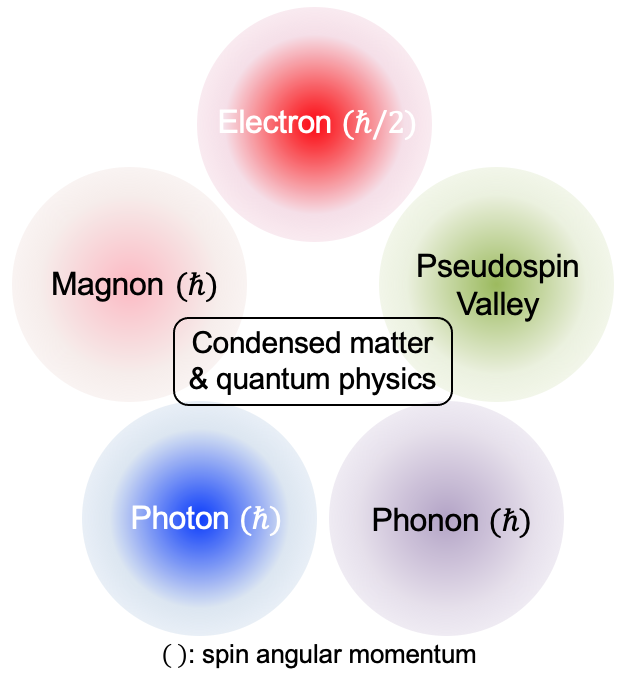In solids, it is understood that the spin angular momentum of electrons plays an important role in, for example, magnetism, superconductivity, electrical transport and optical properties of solids. In addition to electrons and photons, magnons (magnetic excitation), phonons (lattice vibration), and other excitations in solids possess spin angular momentum. We want to understand the dynamics of particles and waves with spin and how they influence the physical properties of solids.

Spin current represents a flow of electrons with opposite spin moving in opposite direction. Whereas current carries charge, spin current carries spin angular momentum. Interestingly, spin current is known to be dissipationless (we do not loose energy when spin current flows). We want to understand the rule of law of spin current.
・Spin current
・Chiral magnetism
・Orbital current
As with electrons, photons possess spin angular momentum. The spin angular momentum of photons manifests itself as the helicity of light (left and right handed circular polariation). Recent studies suggest that irradiating solids with strong circularly polarized light can alter the electronic properties of solids. We are working to study such effects in thin film heterostructures.
・Optical nonlinearity
・Light-structure interaction
Electrons, photons, magnons, phonons, etc. can interact with each other. A new state of matter may emearge when the interaction becomes strong. Such strongly coupled particles are attracting significant interest for potential applications in quantum technologies. Our objective is to identify systems with strong coupling and use them to study the principles of quantum mechanics.
・Phonon-magnon coupling
・Entangled states
